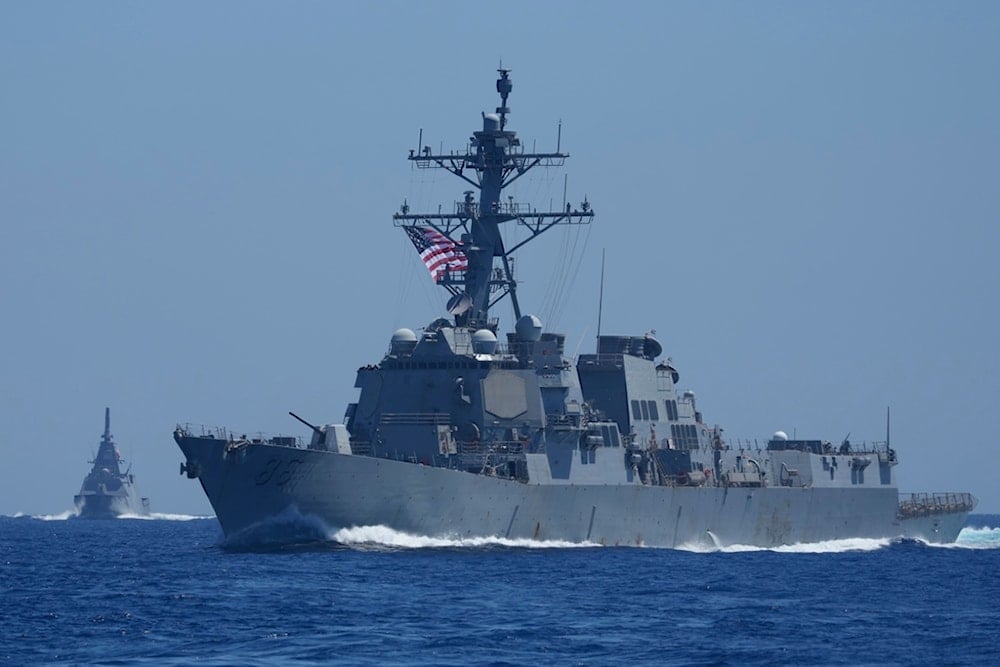US Navy drone fleet faces failures in tests to counter China
US Navy trials of unmanned vessels suffered crashes and failures, raising doubts over the Pentagon’s drone fleet plan to counter China.
-

A US Navy USS Shoup (DDG86), right, and Japanese Maritime Self-Defence Force (JMSDF) frigate JS Noshiro off a disputed South China Sea shoal on Friday, March 28, 2025 (AP)
The US Navy’s ambitious plan to build a fleet of unmanned vessels to counter China has suffered a series of setbacks, according to a Reuters report, with recent sea trials exposing serious technical and operational failures.
During a naval test off the coast of California last month, one of the Pentagon’s advanced unmanned boats unexpectedly broke down. As technicians scrambled to fix a software malfunction, another drone boat collided with the disabled vessel, leapt onto its deck, and then plunged back into the water, an incident captured on video obtained by Reuters.
The mishap, involving vessels built by US defense tech firms Saronic and Black Sea Technologies, is part of a pattern of failures dogging the Pentagon’s unmanned naval program, sources familiar with the initiative told Reuters.
Boat capsized, captain thrown overboard
In another trial weeks earlier, a support boat captain was thrown into the sea after a Black Sea Technologies drone vessel it was towing suddenly accelerated, capsizing the manned craft. The captain was rescued and declined medical treatment, according to four people briefed on the matter.
A person directly involved said both incidents stemmed from a mix of software glitches and human error, including failures in communication between onboard systems and external autonomous control software.
The Pentagon aims to field swarms of self-piloting vessels capable of operating without human crews, which would run Washington several million dollars per high-speed boat. But recent failures highlight the steep challenges ahead.
Leadership woes compound technical struggles
“These test failures show the Navy still needs to adapt its tactics as it better understands what these systems can and cannot do,” said Bryan Clark, an autonomous warfare expert at the Hudson Institute.
Reuters also reported that the Navy’s unmanned aviation procurement unit has been hampered by the dismissal of its top commander. Meanwhile, a senior Pentagon official voiced concerns about the troubled program during a candid meeting with naval leaders last month.
Since the latest incident, the Pentagon’s Defense Innovation Unit (DIU) has indefinitely suspended a nearly $20 million contract with defense company L3Harris, which supplies autonomous navigation software for some vessels, according to two sources.
'Century's biggest challenge'
The relationship between Washington and Beijing is the single biggest challenge shaping the 21st century, US Secretary of State Marco Rubio said in an interview published Tuesday.
“I think it’s the biggest challenge we face. Because the 21st century is going to be defined by the relationship between the US and China,” Rubio told Sid Rosenberg of Sid and Friends in the Morning, according to the State Department transcript.
Rubio described China as both a competitor and an adversary in areas ranging from technology and trade to military, intelligence, and geopolitics.
“They basically want to gain at our expense. That’s a fact,” he said, adding that both countries might benefit from “a period of strategic stability.”

 3 Min Read
3 Min Read










